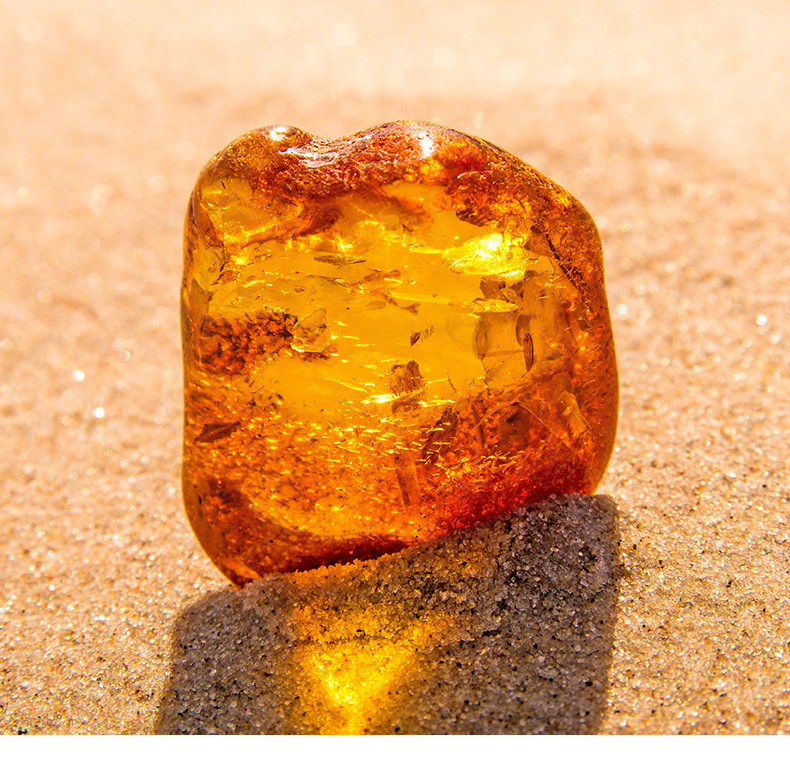
The amber has become a popular gemstone due to its brownish-yellow coloration and its greasy shine. The amber is neither a mineral nor a stone, which usually divide the field of gemstones among itself. Amber is fossilized resin that has retained its characteristic irregular shape over thousands of years. Amber is found as roundish grain, in forms whose shape can be described as flowing, or as dull tubers. Amber also often contains insects or parts of plants as inclusions. The name amber comes from the Middle Low German Börnsteen, which means "Brennstein" and aims at the special brilliance of amber. The amber, consisting of a fossil heart, has been used for more than 6000 years as a gemstone and was also used for the production of art objects. The most famous object, or rather the most famous product made of amber is probably the Amber Room, which has been lost since World War II, which was commissioned by King Friedrich I and installed in the Berlin City Palace. This room, completely paneled with amber elements, was later given to the Russian Tsar Peter the Great.